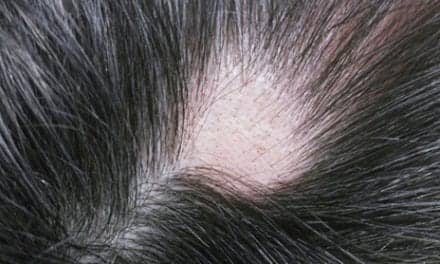An experimental "spray-on-skin" may help speed healing of recalcitrant venous leg ulcers, a new study suggests.
The treatment consists of neonatal keratinocytes and fibroblasts which are suspended in a mixture of different types of proteins associated with blood clotting. Healthpoint Biotherapeutics of Fort Worth, Texas is developing the product.
Patients who received the treatment – sprayed on to the wound every seven days or every 14 days –in conjunction with compression bandaging experienced faster healing and greater likelihood of wound closure than those who were only treated with compression therapy. The findings appear in the Lancet.
Specifically, 70 percent of patients using the spray-on therapy healed within 3-months, compared to 46 percent who underwent other treatments. The wounds treated with the new therapy closed up to 21 days earlier than those which received conventional treatment. (See before and after photos below.)
“The treatment we tested in this study has the potential to vastly improve recovery times and overall recovery from leg ulcers, without the need for a skin graft,” says study author Herbert Slade, MD, of Healthpoint Biotherapeutics. “This means not only that the patient doesn’t acquire a new wound where the graft is taken from, but also that the spray-on solution can be available as soon as required – skin grafts take a certain amount of time to prepare, which exposes the patient to further discomfort and risk of infection.”
In an accompanying editorial, Matthias Augustin, MD, of the University Medical Centre in Hamburg, Germany, writes that “even though compression is, and will remain, the basis of venous leg ulcer treatment, hard-to-heal ulcers do need additional therapy. In these wounds, prolonged futile, conservative treatment will increase costs without additional benefit. Therefore, the temporary higher costs for additional cell therapy can be justified as an investment in improved healing.”
Moreover, “the benefits observed in this study could well be observed also in other chronic wounds like ischemic and diabetic foot ulcers.”






